Learn how to make brown butter (beurre noisette) at home in less than 15 minutes with step-by-step instructions & pics to help you transform your normal butter into a rich & nutty, golden brown color that’s perfect for baking, sauces and so much more!
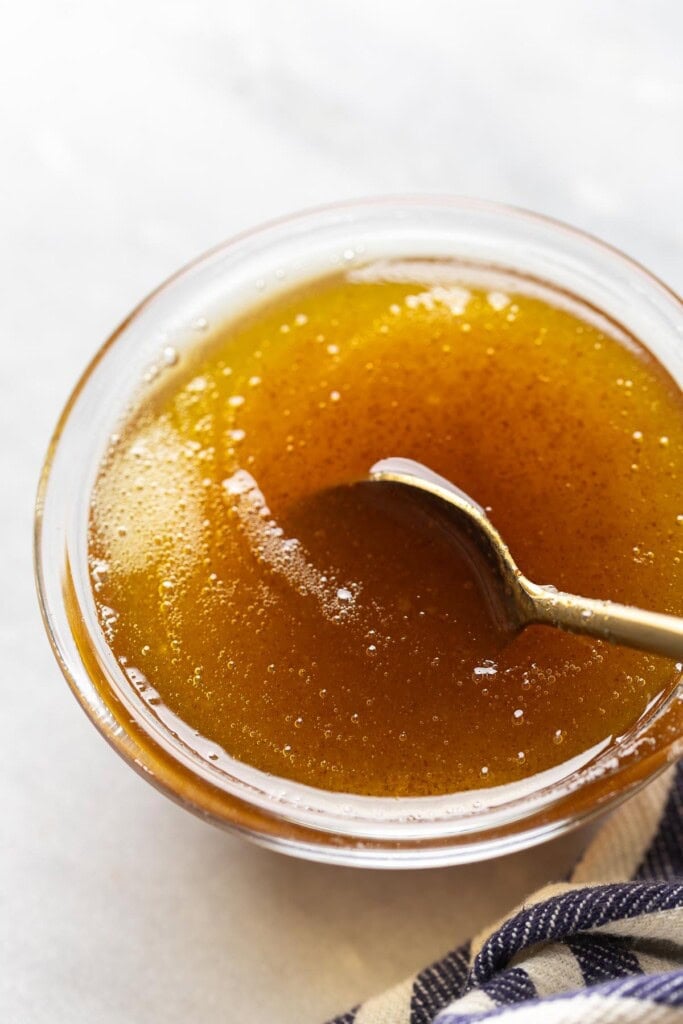
What is Brown Butter?
Simply put: brown butter = toasted butter
It’s regular butter that has been cooked just long enough (about 10 minutes or so) for the milk solids (the fat, protein & sugars) to separate and cook until it’s toasty & browned with a rich, toffee-like aroma which explains why it’s also known as beurre noisette which means “hazelnut butter” in French cuisine.
If you like nerdy food-science things, you might know that this is as result of the Maillard reaction.
Browning butter brings out rich, nutty flavor and caramel notes that you can’t get from regular butter alone.
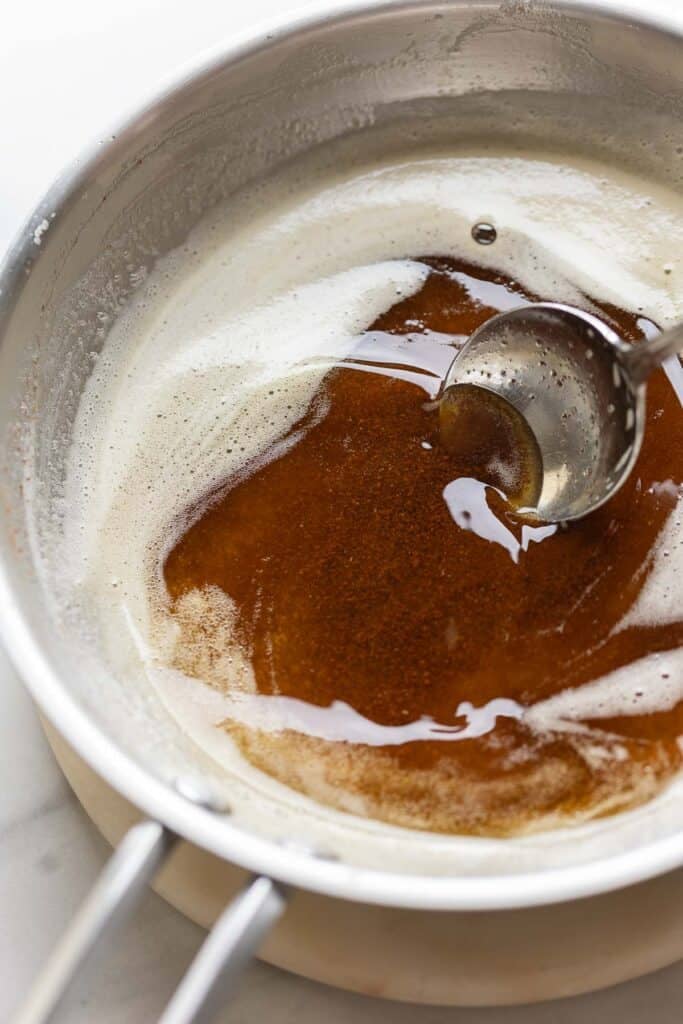
How to Make Brown Butter
Brown butter is probably much easier to make than you might think. All you need is a stick of butter, a pan, a spoon or whisk and about 15 minutes to cook.
Though it is easy, there are a few things you want to watch, listen and smell for as the butter browns so you know you’re on the right track.
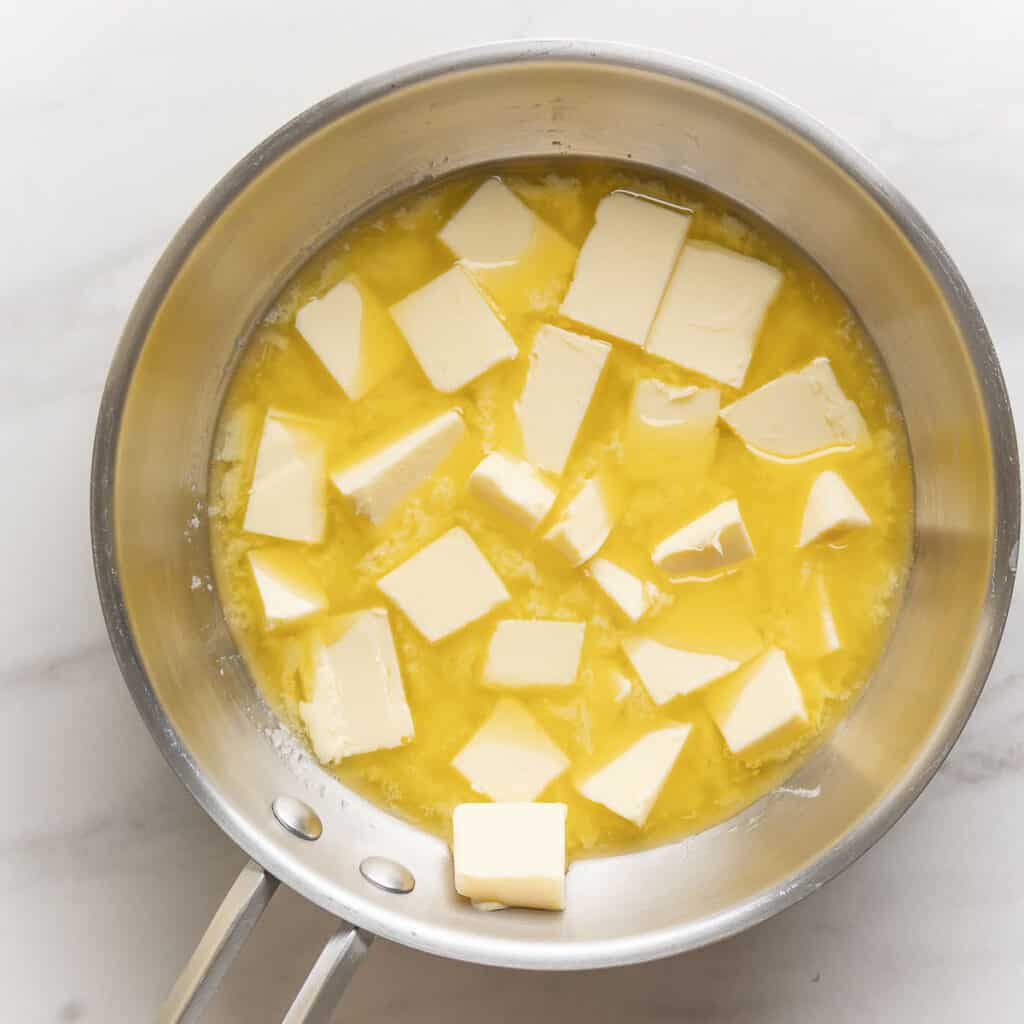
Start with cubed or sliced butter: melt butter over a medium heat.
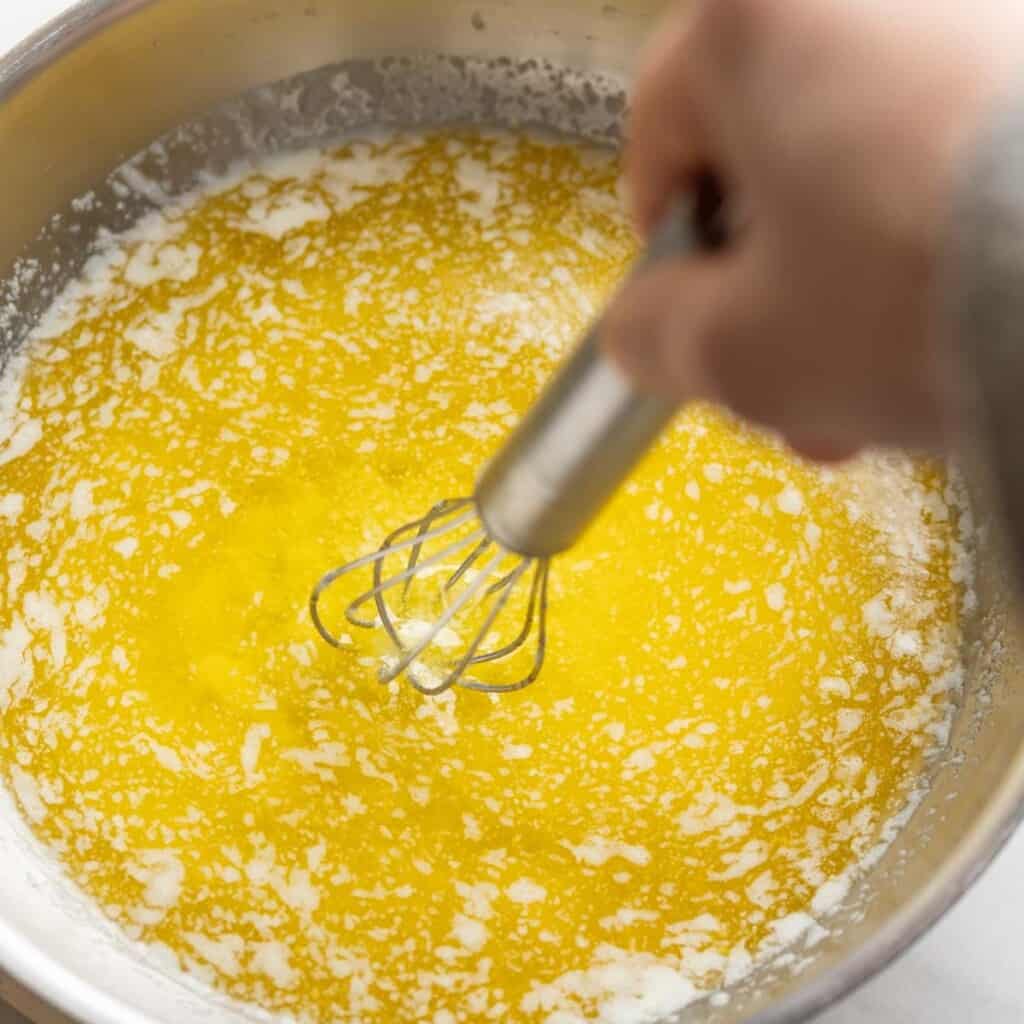
Stir: Keep things moving to prevent burning.

Keep cooking: Keep stirring and watch as the milk solids start to clump up & float to the top of the butter as you continue to cook.

Look for bubbles & foam: Large, clear bubbles will appear then shrink to small, foamy bubbles as the solids dissolve or sink to the bottom.
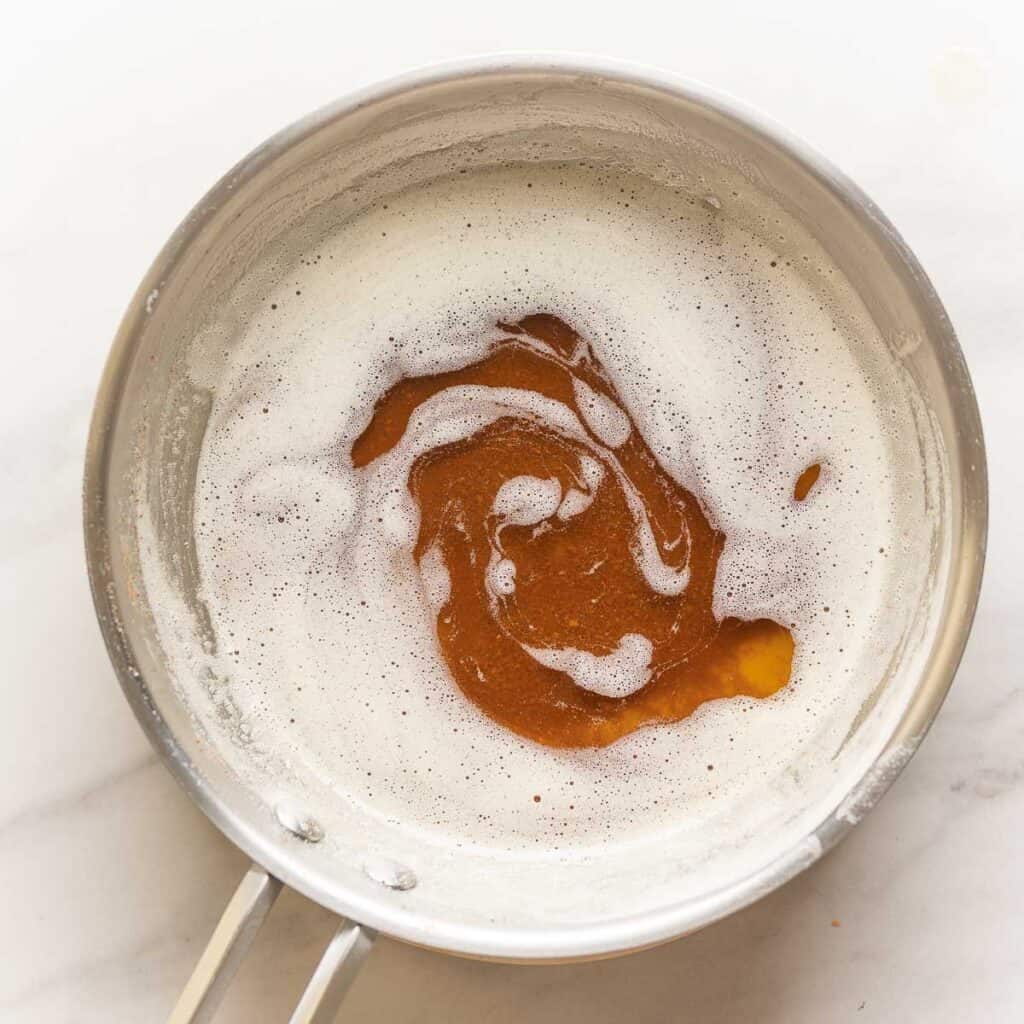
Listen & smell: As the milk solids sink to the bottom, they will start to crackle & create a rich, nutty aroma. The foam might make it hard to see the color, so keep stirring.

Transfer & cool: Pour the butter into a heatproof bowl to stop the residual heat from continuing to cook the butter. Finish cooling in the bowl until ready to use.
FYI: Pan Type Matters when Making Brown Butter
- Use a light-colored pan and avoid dark ones. Ideally, you want a light-colored saucepan so you can see the butter change color as it darkens.
- Consider the pan size. A medium-sized pan will usually do the trick. Large pans will cook the butter too quickly (more surface area = more butter exposed to the hot surface. If your pan is too small, you run the risk of splatter and butter bubbling over the top.
- Consider the material & pan weight. Stainless steel and aluminum pans are great heat conductors. If possible, choose a heavy-bottomed pan if you can because they absorb and distribute heat more evenly than thin, lightweight pans.

What to do with Browned Butter?
Brown butter is incredibly versatile and can be used to elevate both sweet and savory dishes. Here are a few different ways you can put your brown butter to use:
- Bake with it: Swap regular butter with brown butter and bake up a batch of cookies, brownies and baked loaf breads.
- Make sure to use a recipe that it designed to use brown butter to factor in the change in chemical makeup.
- Add to pasta: Toss fresh herbs and parmesan with fresh cooked pasta for a simple, yet flavorful dish.
- Drizzle over veggies or mix into mashed potatoes: Pour over steamed or roasted veggies. This is great on Brussels sprouts, carrots, green beans, etc.
- Mix into frostings & glazes: Add a nutty, caramel-like flavor to buttercreams, glazes and frostings. Use can use cooled melted butter or softened, solidified butter.
- Swap the regular butter with browned butter to make a brown butter cream cheese frosting for these Gluten Free Pumpkin Cinnamon Rolls!
- In place of your regular butter spread: Spread over toast, cornbread, dinner rolls, pancakes, waffles, French toast, etc.
🌟Make this Next🌟

Impress the gluten free skeptics in your like by making these bakery-style brown butter chocolate chip cookies! They’re soft & chewy with a nutty, caramel-like flavor and melty chocolate in every bite. You’d never guess they were gluten free!
Final Tips & Things to Keep in Mind
- Use the browned bits! Don’t toss out the little brown bits at the bottom of the pan. It’s the toasted milk proteins & solids – they’re full of flavor.
- Keep a close eye on the butter. Don’t walk away from the pan after it starts to bubble and foam. The cooking process moves quickly from here and you risk ending up with burnt butter if you don’t stir and move off the heat when it’s time.

Enjoy!
Let me know if you try this brown butter recipe! Leave a comment and review with your thoughts. I always appreciate the feedback and serving suggestions that you come up with!
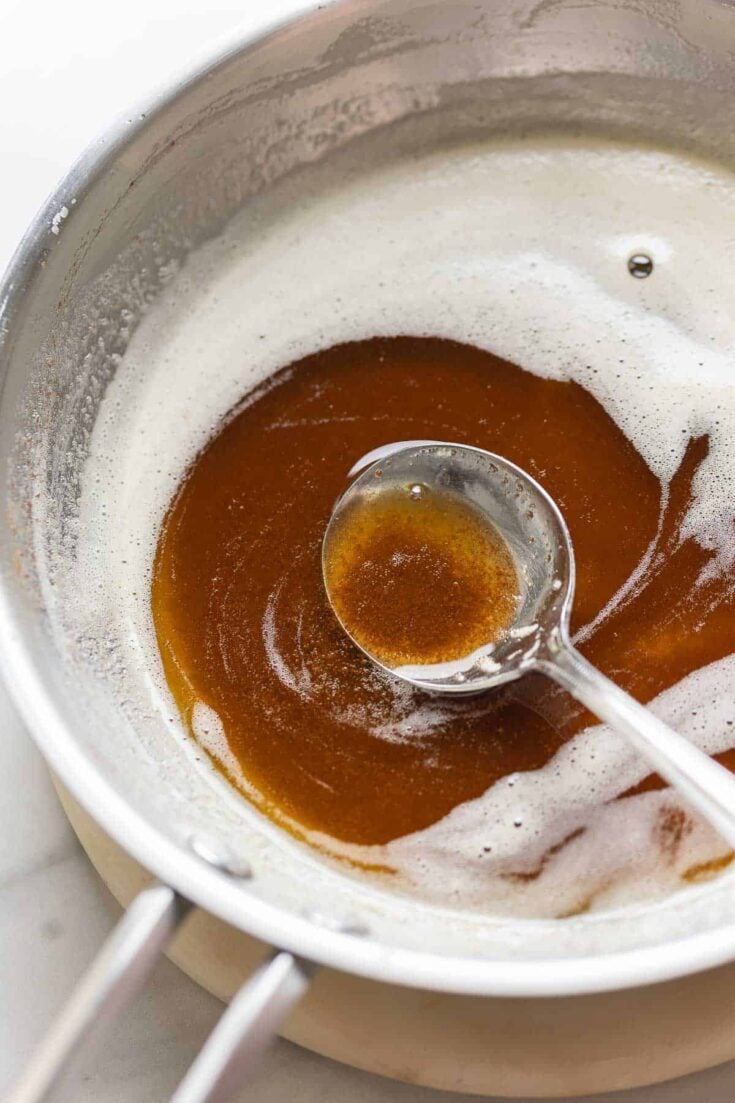
How to Make Brown Butter Recipe
All you need is about 10 minutes on the stove top to transform regular butter into a rich, toasty & aromatic brown butter.
Ingredients
- 1 cup butter, cut into tablespoon-sized chunks
Materials
- medium-size pot or sauté pan to cook
- whisk or spoon for stirring
- heat-proof bowl for the butter to cool
Instructions
Materials:
- medium-size pot or sauté pan to cook
- whisk or spoon for stirring
- heat-proof bowl for the butter to cool
Preparation
- Add the butter to a medium pan or skillet and melt over a medium heat.
- Stir or whisk the butter every so often to keep it moving until it starts to bubble up. You should be able to see the bottom of the pan through the bubbles at this point.
- After about 5-10 minutes, the bubbles will turn to foam and you will no longer be able to see the bottom of the pan. Stir or whisk constantly as it foams, keeping an eye on the milk solids that you should notice fall to the bottom. After a minute or so, the butter will darken from yellow to amber and the milk solids will darken into a golden brown. You should also notice a rich & nutty aroma.
- Take the pot off the heat, and pour into a heat-proof bowl or contain to stop cooking and cool down.
- Let cool a bit before using. How long you cool it will depend on what you're using it for so look to your recipes for guidance. Use melted or fully cooled & solidified.
Notes
- Pan Type: I recommend using a light colored or stainless steel material so you can keep an eye on how the color darkens.
- How much does butter reduce when browning? You should expect to lose about 20-25% of the volume because you're cooking out the water. As a general rule of thumb, every ½ cup butter will lose about 1-2 tbsp butter OR 100g butter becomes about 75g browned butter.
- Butter Type: This works with both salted & unsalted butter. Salted butter is almost always my preference, but what you need will depend on what final flavor your recipe calls for.


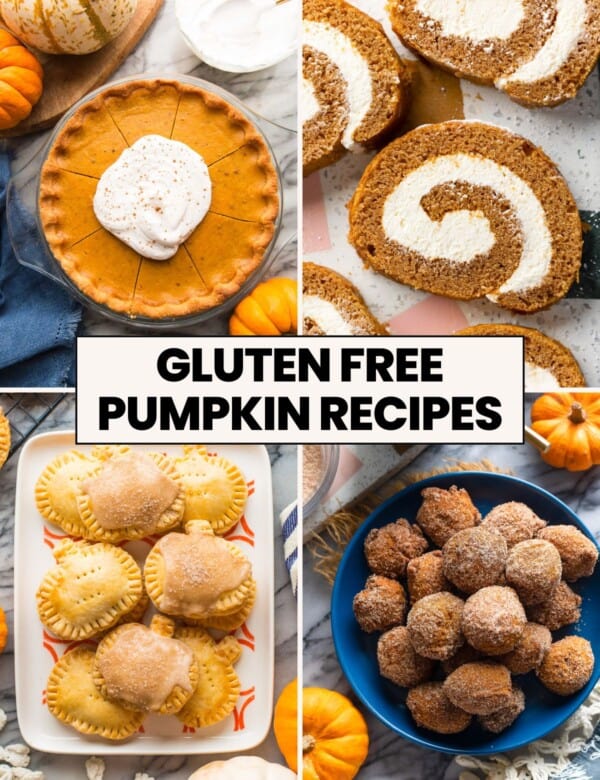
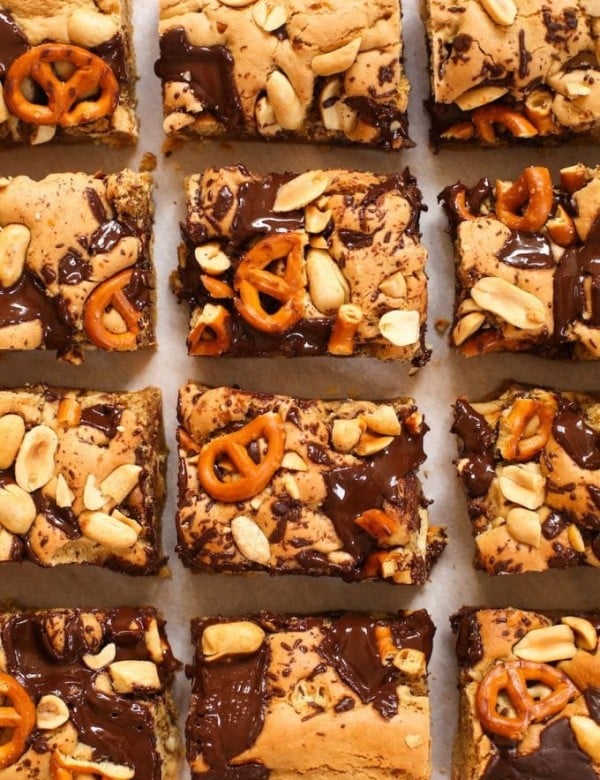



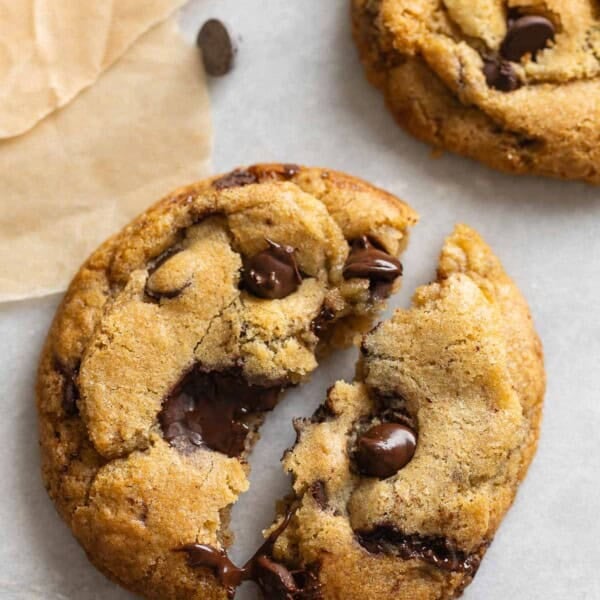
Leave a Review!